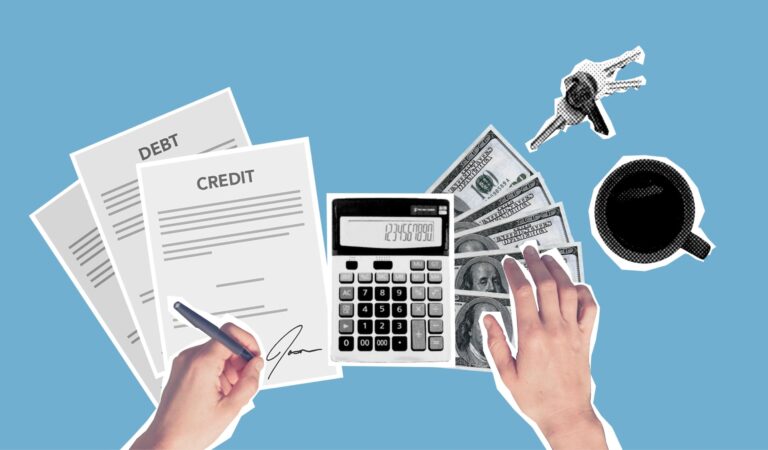Life has a way of throwing unexpected surprises our way—whether it’s a sudden car repair, a medical bill, or even a job loss. That’s why having an emergency fund is crucial. It’s your financial safety net, giving you peace of mind knowing you can handle whatever life throws at you without going into debt. But how do you build that emergency fund quickly? Here’s a step-by-step guide to help you build an emergency fund in six months or less, all while keeping things fun and manageable.
Set a Clear Goal
The first step in building an emergency fund is knowing how much you need. A good rule of thumb is to aim for three to six months’ worth of living expenses. This might sound daunting, but don’t worry—you can break it down into smaller, more manageable goals.
Start by calculating your monthly expenses, including rent or mortgage, utilities, groceries, transportation, and any other necessary costs. Once you have that number, multiply it by three or six, depending on your target. This total is your emergency fund goal. For example, if your monthly expenses are $2,000, aim for an emergency fund between $6,000 and $12,000.
Break It Down
Now that you have your goal, it’s time to break it down into smaller chunks. If you want to build your emergency fund in six months, divide your total goal by six to determine how much you need to save each month. In our example, if your goal is $6,000, you’d need to save $1,000 per month.
This might still feel like a lot, but don’t panic—there are plenty of ways to reach that target without drastically changing your lifestyle. Breaking it down into smaller goals makes the process feel more achievable and keeps you motivated.
Create a Budget That Prioritizes Savings
To reach your savings goal, you’ll need to adjust your budget to prioritize your emergency fund. Start by reviewing your current spending. Identify areas where you can cut back, even if it’s just temporarily. Perhaps you can eat out less, reduce subscription services, or pause any non-essential spending.
Once you’ve freed up some cash, direct it toward your emergency fund. Automating your savings can make this even easier. Set up a direct transfer from your checking account to your savings account as soon as you get paid. This way, you’re paying yourself first and ensuring that your emergency fund grows each month.
Boost Your Income with a Side Hustle
If cutting back on expenses isn’t enough to reach your savings goal, consider boosting your income with a side hustle. Thanks to the gig economy, there are countless ways to earn extra money in your spare time. Whether it’s driving for a rideshare service, freelancing online, or selling handmade crafts, a side hustle can provide a significant boost to your emergency fund.
Even if you can only dedicate a few hours a week, the extra income can add up quickly. For example, if you earn an additional $200 a week from a side hustle, that’s an extra $800 a month you can funnel directly into your emergency fund.
Sell Unwanted Items
Take a look around your home—chances are, you have items you no longer need or use. Why not turn those items into cash? Selling unwanted belongings can be an easy and effective way to pad your emergency fund.
Consider hosting a garage sale, selling items online through platforms like eBay, Facebook Marketplace, or Poshmark, or taking high-value items to a local consignment shop. Not only will you declutter your home, but you’ll also get closer to your savings goal with each sale.
Save Windfalls and Bonuses
Whenever you receive unexpected money, like a tax refund, bonus at work, or even a birthday gift, consider putting it directly into your emergency fund. While it might be tempting to splurge, using windfalls to bolster your savings can help you reach your goal faster.
Even small amounts can make a big difference when added consistently. Over time, these windfalls can significantly boost your emergency fund, helping you build that safety net even sooner.
Use Apps and Tools to Help You Save
Technology can be a powerful ally in your savings journey. Numerous apps and tools are designed to help you save money effortlessly. For example, apps like Acorns or Digit round up your everyday purchases to the nearest dollar and automatically invest or save the difference.
Other apps, like Qapital, allow you to set specific savings goals and rules, such as saving a certain amount every time you skip your daily coffee run. These tools can automate your savings and make it easier to reach your emergency fund goal without even thinking about it.
Stay Motivated and Track Your Progress
Saving for an emergency fund can feel like a marathon, especially when you’re trying to build it quickly. Staying motivated is key to reaching your goal. One way to do this is by tracking your progress visually. Use a savings tracker, a spreadsheet, or even a simple chart where you can color in your progress as you save.
Celebrating small milestones along the way can also keep you motivated. Treat yourself to something small when you reach 25%, 50%, or 75% of your goal. These mini-rewards can help you stay focused and excited about reaching your final target.
Final Thoughts
Building an emergency fund in six months or less is a challenge, but it’s absolutely achievable with the right plan and mindset. By setting clear goals, adjusting your budget, and using creative strategies to save and earn more, you can quickly build a financial safety net that provides peace of mind.
Remember, an emergency fund isn’t just about money—it’s about security and freedom. With this cushion in place, you’ll be better equipped to handle whatever life throws your way, knowing that you have the resources to stay afloat without falling into debt. So, start today, stay focused, and watch your emergency fund grow!





 GOOGL
GOOGL  META
META
Leave a Comment